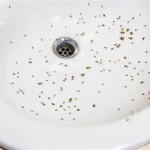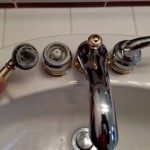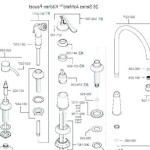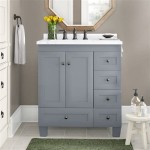How To Unclog a Bathroom Sink with Bleach: A Comprehensive Guide
A clogged bathroom sink is a common household problem that can disrupt daily routines and create inconvenience. A buildup of hair, soap scum, toothpaste, and other debris can restrict water flow, eventually leading to a complete blockage. While various methods exist to address this issue, the use of bleach is often considered as a potential solution.
This article provides a detailed exploration of using bleach to unclog a bathroom sink, examining the procedures involved, the potential benefits and drawbacks, and essential safety precautions. The information presented herein aims to equip individuals with the knowledge necessary to make informed decisions regarding this approach and to execute the process effectively and safely.
Understanding the Clog and Bleach's Action
Before attempting to unclog a sink with bleach, it's crucial to understand the nature of the clog and how bleach interacts with it. Most bathroom sink clogs consist of organic materials such as hair, soap residue, and skin cells. These materials tend to accumulate over time within the drainpipe, gradually narrowing the passage and impeding water flow.
Bleach, a chemical solution primarily composed of sodium hypochlorite, possesses strong oxidizing properties. This means it can break down organic matter by disrupting its chemical structure. In theory, bleach can dissolve or at least loosen the components of the clog, allowing water to pass through more freely. However, the effectiveness of bleach depends largely on the composition and severity of the clog.
It is also important to note that bleach is more effective against organic matter than inorganic materials like minerals or hard water deposits. If the clog is primarily composed of these inorganic substances, bleach is unlikely to provide significant relief.
Step-by-Step Instructions for Using Bleach to Unclog a Sink
If the individual decides to attempt to unclog a sink with bleach, it is imperative to follow a structured approach to maximize effectiveness and minimize risks. The following steps outline the recommended procedure:
Step 1: Preparation and Safety Measures: Prioritize safety by wearing appropriate protective gear. This includes chemical-resistant gloves to protect the skin from direct contact with bleach, as it can cause irritation and burns. Eye protection, such as goggles or safety glasses, is also crucial to prevent splashes from entering the eyes. Ensure adequate ventilation by opening a window or turning on the bathroom exhaust fan. Bleach fumes can be irritating to the respiratory system, particularly in enclosed spaces.
Step 2: Removing Standing Water: If the sink is holding standing water, remove as much of it as possible before introducing the bleach. This allows the bleach to directly target the clog rather than being diluted by the existing water. The water can be removed using a cup, bucket, or wet/dry vacuum.
Step 3: Diluting the Bleach: Never pour undiluted bleach directly into the drain. This can damage the pipes and increase the risk of harmful fumes. Instead, dilute the bleach with water. A common ratio is one part bleach to two parts water. This dilution helps to control the reaction and minimize potential damage.
Step 4: Pouring the Bleach Solution: Carefully pour the diluted bleach solution into the drain. Avoid splashing the solution onto surrounding surfaces. Pour slowly and steadily to allow the bleach to gradually saturate the clog.
Step 5: Waiting Period: Allow the bleach solution to sit in the drain for a designated period. A waiting time of 15 to 30 minutes is generally recommended. This allows the bleach sufficient time to react with the organic matter within the clog.
Step 6: Flushing with Hot Water: After the waiting period, flush the drain with hot water. Run the hot water for several minutes to dislodge and flush away any loosened debris. The hot water helps to further break down any remaining clog material and carry it away. Avoid using boiling water, as it can damage PVC pipes.
Step 7: Assessing the Results: Observe the water flow to determine if the clog has been cleared. If the water drains freely, the process was successful. If the water continues to drain slowly or not at all, the clog may still be present.
Step 8: Repeating the Process or Seeking Alternatives: If the initial attempt is unsuccessful, the individual can repeat the process once or twice. However, if the clog persists after multiple attempts, it is advisable to explore alternative methods or seek professional assistance. Repeated use of bleach can damage pipes and may not be effective against stubborn clogs.
Potential Risks and Drawbacks of Using Bleach
While bleach can be effective in some cases, it's essential to acknowledge the potential risks and drawbacks associated with its use in unclogging drains:
Pipe Damage: Bleach is a corrosive substance that can damage certain types of plumbing pipes, particularly older metal pipes and rubber seals. Repeated or excessive use of bleach can weaken the pipes over time, leading to leaks or even pipe failure. PVC pipes are generally more resistant to bleach, but prolonged exposure can still cause degradation.
Harmful Fumes: Bleach emits fumes that can be irritating to the respiratory system, especially in poorly ventilated areas. These fumes can trigger asthma attacks, cause coughing and wheezing, and irritate the eyes and throat. Additionally, mixing bleach with other cleaning products, particularly ammonia-based cleaners, can create toxic and potentially deadly gases.
Environmental Concerns: Bleach is harmful to the environment. When it is flushed down the drain, it can contaminate waterways and harm aquatic life. Wastewater treatment processes may not fully remove bleach from the water, leading to its accumulation in the environment.
Ineffectiveness Against Certain Clogs: As previously mentioned, bleach is most effective against organic matter. It is unlikely to dissolve or dislodge clogs composed primarily of mineral deposits, hair clumps bound by grease, or foreign objects. Using bleach on such clogs may be ineffective and simply expose the pipes to unnecessary chemical stress.
Skin and Eye Irritation: Direct contact with bleach can cause skin irritation, burns, and eye damage. It is crucial to wear appropriate protective gear to prevent such contact. If bleach comes into contact with the skin or eyes, rinse thoroughly with water for at least 15 minutes and seek medical attention if irritation persists.
Alternatives to Using Bleach for Unclogging Sinks
Given the potential risks associated with using bleach, it is prudent to consider alternative methods for unclogging bathroom sinks. Several effective and less hazardous options are available:
Plunger: A plunger is a simple yet effective tool for dislodging clogs. Ensure that there is enough water in the sink to cover the cup of the plunger. Create a tight seal around the drain opening and repeatedly plunge up and down to create pressure that can loosen the clog.
Baking Soda and Vinegar: This natural combination creates a chemical reaction that can break down clogs. Pour one cup of baking soda down the drain, followed by one cup of vinegar. Allow the mixture to fizz for 30 minutes, then flush with hot water.
Hot Water: For minor clogs, simply pouring hot (but not boiling) water down the drain can be sufficient to dissolve soap scum and loosen debris. Run the hot water for several minutes to ensure thorough flushing.
Wire Coat Hanger or Drain Snake: A straightened wire coat hanger or a specialized drain snake can be used to physically remove debris from the drain. Carefully insert the wire or snake into the drain and attempt to break up or pull out the clog. Exercise caution to avoid damaging the drainpipe.
P-Trap Removal: The P-trap is the curved section of pipe located under the sink. This area is a common site for clogs to accumulate. Carefully detach the P-trap, being prepared for water to spill out. Remove any debris found inside the trap and reassemble it.
Enzyme Drain Cleaners: Enzyme drain cleaners contain bacteria that consume organic waste. These cleaners are a more environmentally friendly alternative to harsh chemicals. Follow the instructions on the product label for proper application.
Proper Disposal of Bleach and Rinse Water
It is important to dispose of bleach and rinse water responsibly. After using bleach to unclog a sink, do not simply pour the remaining bleach solution down the drain. This can contribute to environmental pollution and potentially damage the plumbing system. Instead, dilute the bleach with a large volume of water and pour it slowly down a drain that is connected to the municipal sewer system.
Rinse water used for cleaning the sink after bleach treatment should also be disposed of carefully. Avoid pouring it into storm drains, which often lead directly to waterways without treatment. The diluted bleach in the rinse water can still harm aquatic life. Instead, pour the rinse water down a drain connected to the sewer system, ensuring that it is further diluted with tap water.
Empty bleach containers should be thoroughly rinsed with water before disposal. The empty container can then be recycled or disposed of in accordance with local regulations.

7 Steps To Unclog A Shower Drain With Bleach

Easy Ways To Unclog Drains Clearing Clogged
Tiktok Drain Cleaning S That Use Bleach Are Dangerous Experts Say

How To Unclog A Sink 12 Easy Ways

7 Steps To Unclog A Shower Drain With Bleach

How To Unclog A Sink 12 Easy Ways

How To Unclog A Bathtub Drain With Bleach And Keep It Unclogged

I Poured Bleach Down My Drain The Do S And Don Ts Afterward
How To Unblock A Sink Village Heating

Bleach Dissolves Hair Mitch Clemmons Plumbing Lahabra Fullerton Brea
Related Posts







